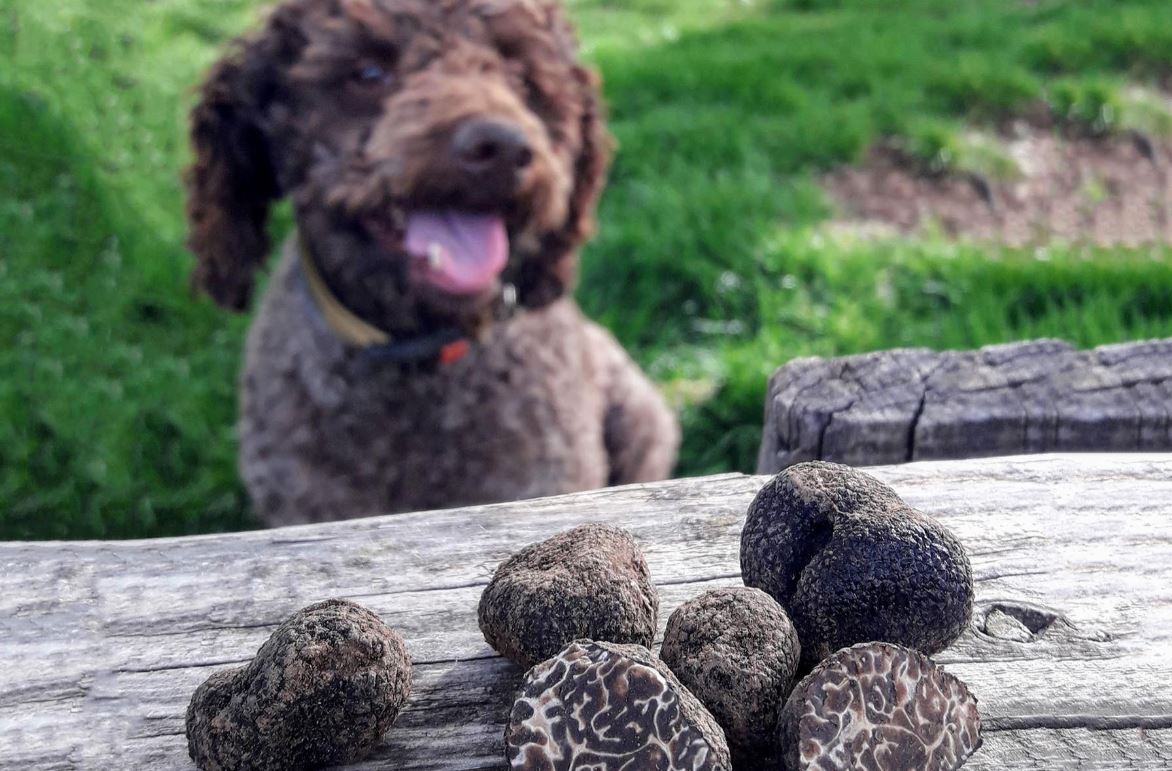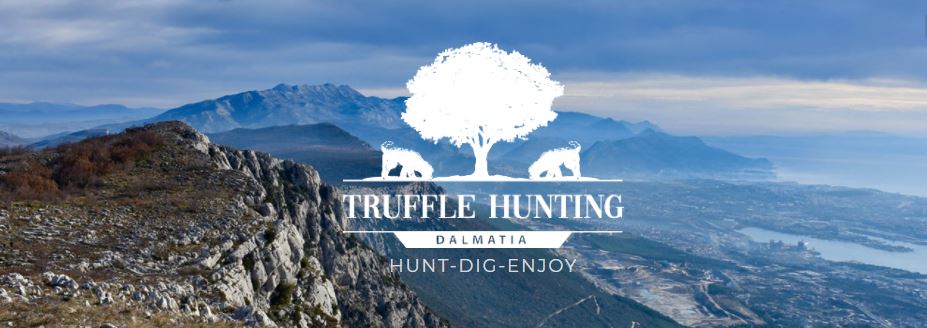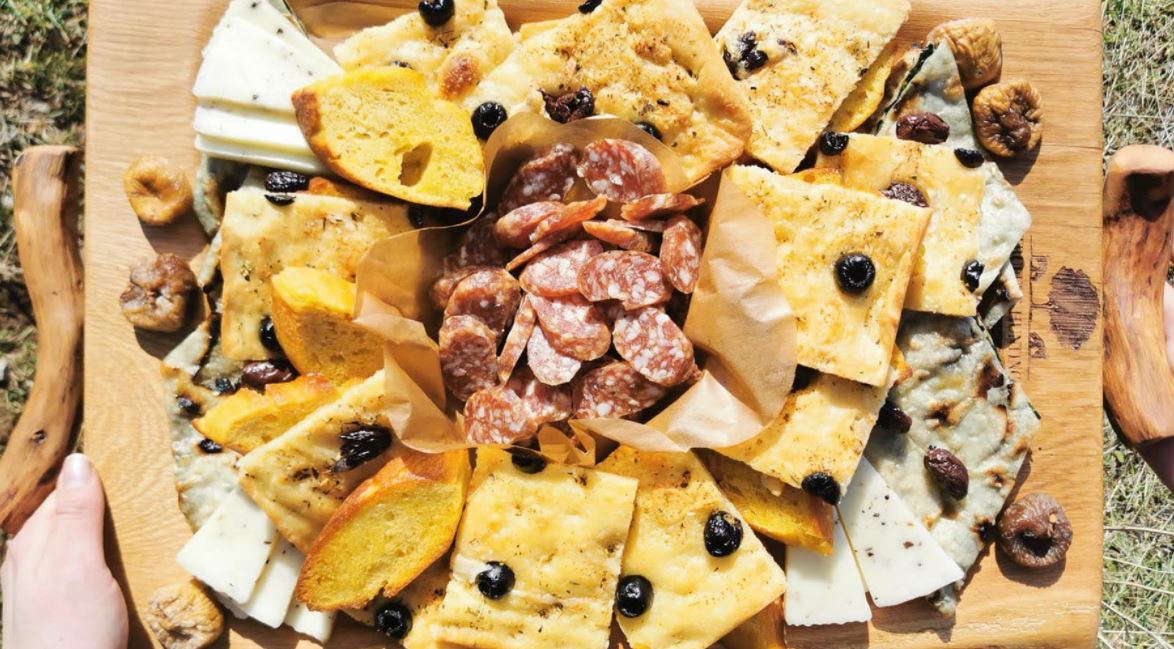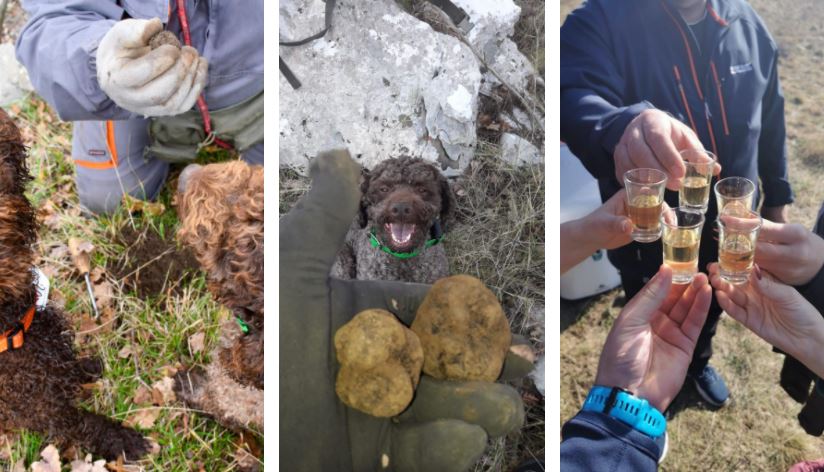Croatia Through the Eyes of a Digital Nomad: Dalmatia’s Underground Fungi is Croatia’s Black Gold
December 28, 2020 - Cyndie Burkhardt continues her nomad lifestyle with her experiences in Croatia - this week with a little truffle hunting in Dalmatia.
The area surrounding Split is joining the exclusive and rarified world of wild truffle hunting, where these underground mushrooms are highly prized delicacies and adorable dogs track them down in secret locations.
One fine day I sat in a cozy hilltop restaurant in Motovun sipping Croatian red wine and gazing at both the picturesque view out across the countryside and the eyes of my handsome boyfriend across the table. We were exploring Istria and I was about to have the most anticipated meal of our trip. The entire place had a gentle whiff of truffles and it filled my nose. The waiter placed two bowls of pasta in front of us and started shaving truffles on top. He asked if I wanted more. I smiled and said “yes!” and he proceeded to cover my dish. I think I melted before I even took a bite.
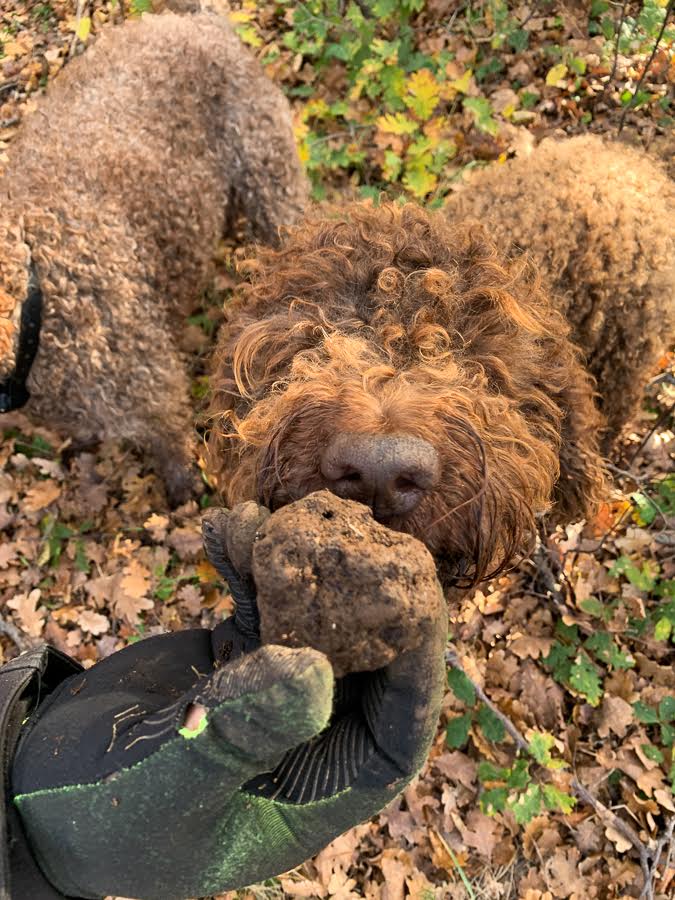
(Dogs experience the world through scent. The key to training them to find truffles is scent and positive rewards—they smell a truffle, they get a treat.)
That was years ago and I’ve eaten truffle pasta only one other time—until now, that is—but I’ve never forgotten the experience. The area surrounding Split is joining Istria and Zagreb in the truffle economy, as recently reported here. Learning that I could go on a real hunt with dogs, and eat truffles, I jumped at the chance.
Secret location
Ivana Najev met me near Mall of Split and blindfolded me before we drove to meet her father Tonci and the dogs at a secret location. It’s well known that truffles are highly coveted for elite dining tables and they rank among the rarest foods in the world with some of the highest prices. Given the stakes, I was only told that we were going to Mosor Mountain. The intrigue was killing me, but it was certain to be an adventure and I acquiesced.
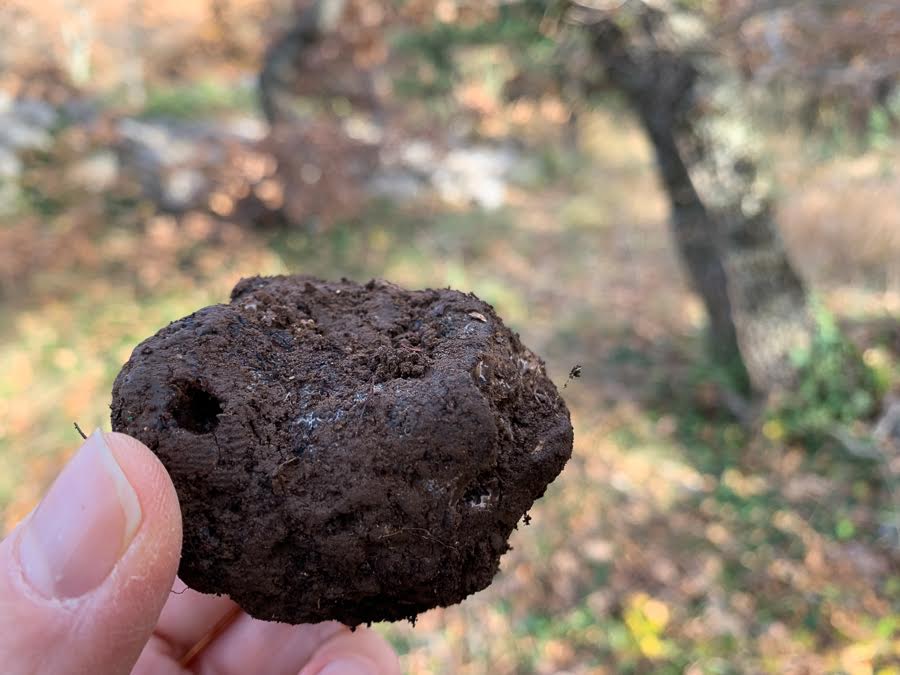
(Dalmatia’s soil is predominantly black, which produces black truffles like this black winter Tuber Melanosporum.)
Truffle dogs
Once the car stopped and I got out and saw the dogs, they were irresistible. Aldi is seven years old and a seasoned professional. Indi is one and a half years old and is still full of puppy energy. Both are medium sized Lagotto Romagnolos with golden brown curly coats, and they’re absolutely adorable. Their fur reminded me of my grandmother’s hair, God rest her soul. I liked them immediately. The dogs darted around the forest bursting with excitement before getting to work. I laughed out loud watching them run about, their faces and tails full of expression.
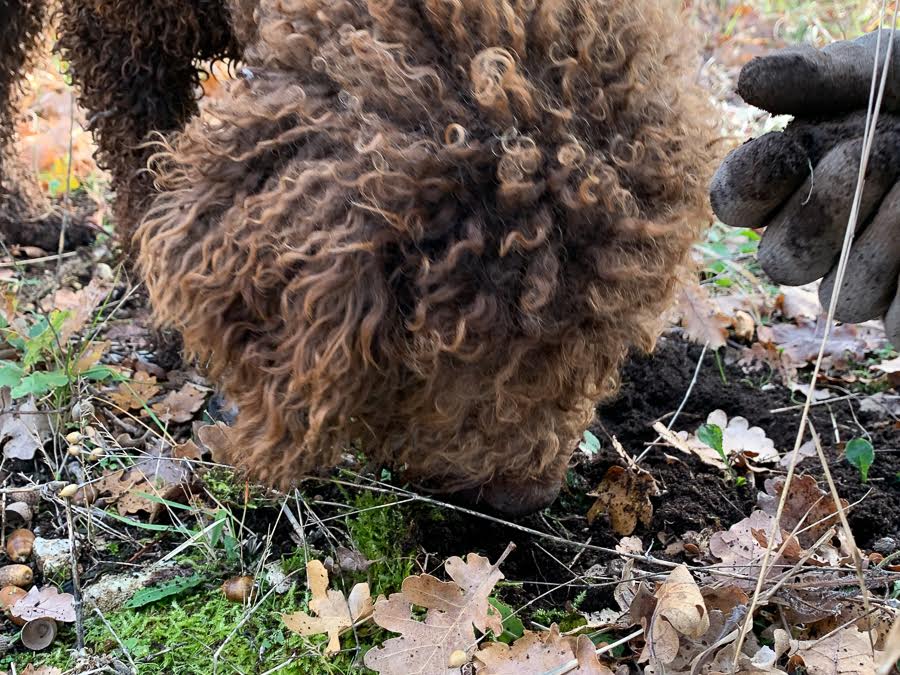
(One tactic in training dogs is to stuff toys with truffles and bury them, making a hide-and-seek game fun for them.)
When it was time to hunt the dogs were focused, moving from one spot to another as scents caught their attention. Aldi and Indi work together but they don’t dig in the same hole. When one finds a truffle spot the other one watches over his shoulder, as if waiting for the results. I don’t know if this is typical behavior for truffle dogs but it looked like team spirit, sort of like saying “hey buddy, nice score” and giving a high-five. Sometimes a dog would lay down right next to his spot while Tonci or Ivana dug into the soil to retrieve the prize.
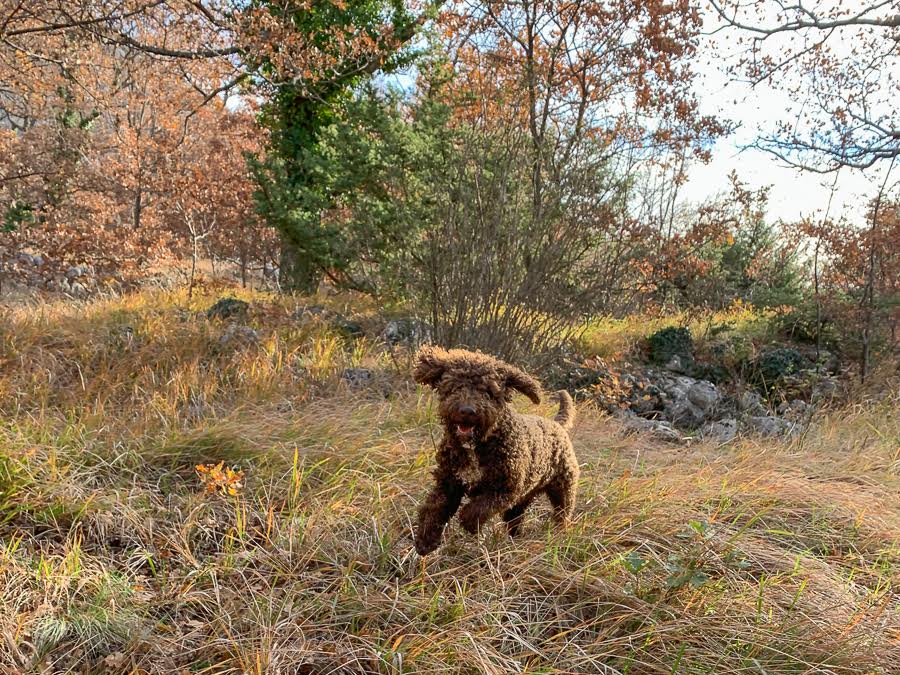
(Lagotto Romagnolos are the primary dogs specifically bred for truffle hunting. Truffle dogs can be expensive, it's not unheard of to pay $4,000 for a prime Lagotto and another $5,000 to train it. Training starts from two months of age and takes about two years for a dog to mature and become really good. They want to play, but they’re still working.)
Seductive smell
These trained animals were constantly moving and sniffing for good reason. As a truffle matures it releases a pungent odor when ripe, which is key to the hunting process. The smell comes from volatile organic compounds, similar to pheromones released by a male pig. I knew about truffle hunting with pigs and now I know the reason—they’re an aphrodisiac for a female. Pigs are natural hunters but also feeders, which is an abrupt way to watch your hard work and profit go down the drain; dogs are preferred.
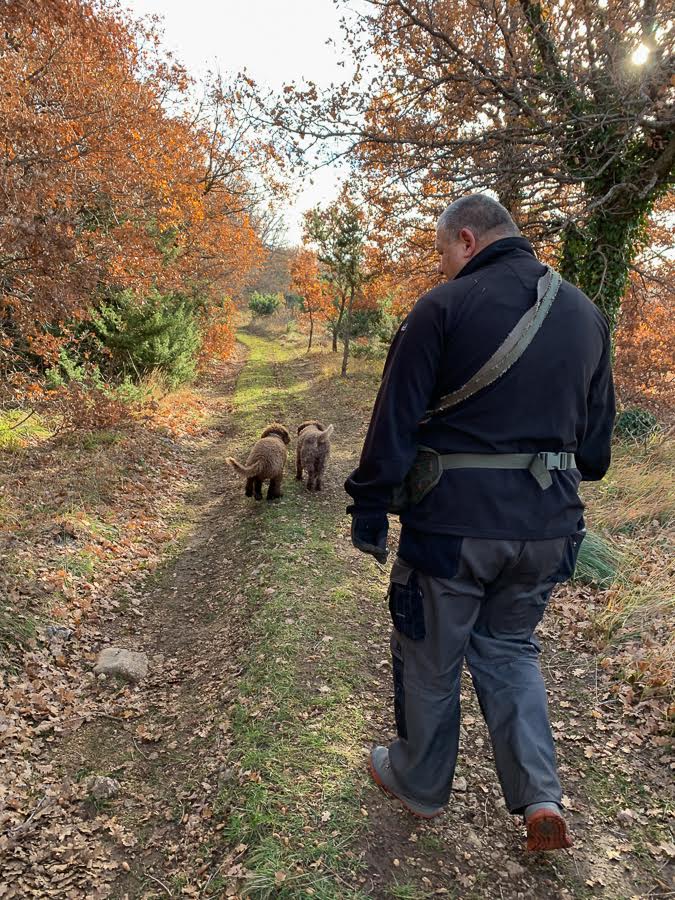
(Aldi and Indi are more than working dogs, they’re beloved family pets. They have their own room in the house with a carpet, a couch, and a television. What do they eat? Regular dog food.)
Intoxicating appeal
It turns out there’s more to truffles than sex appeal. Researchers in Italy found that black truffles produce a natural chemical compound similar to marijuana's active compound tetrahydrocannabinol (THC). Truffles are not chemically addictive but many people find them intoxicating. “You start to eat and you always want them,” says Ivana. “The dogs have the same reaction, it’s like a drug. Indi lays down on the hole because the smell makes him happy, and crazy.”
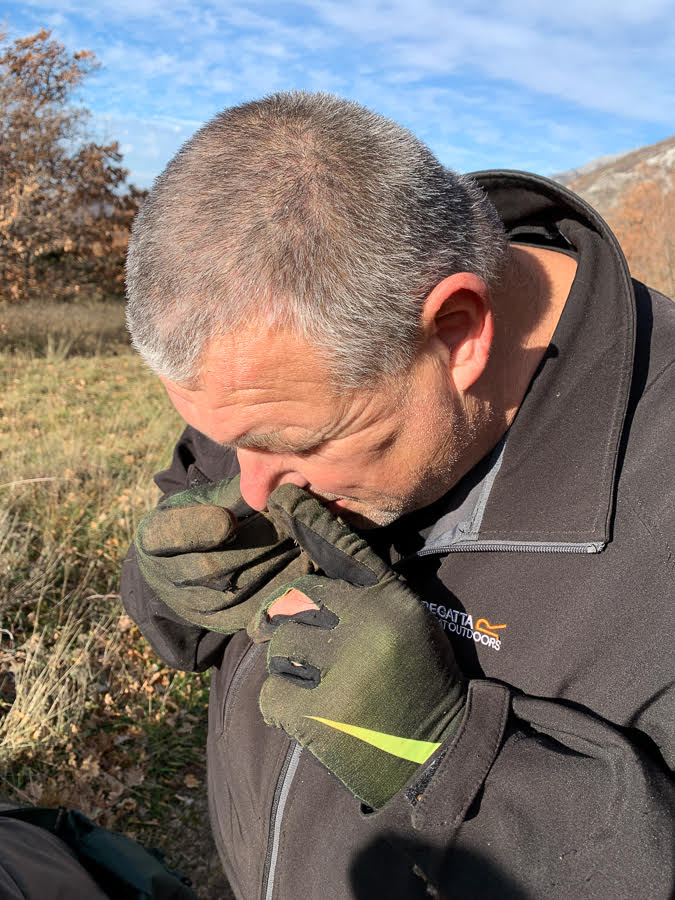
(A truffle’s size and smell are factored into their overall value, which can reach into tens of thousands of dollars at market.)
Nature Lover
How does someone get into this business anyway? It helps to be a nature lover and like most Croatians, Tonci Najev thrives on being outdoors. This is clear from his notable background as a professional diver. His feats include being on the expedition team that made the first-ever dive into the Red Lake, near Imotski, and earning records for descending 100+ meters (330+ feet) with pure oxygen, no mixing of gases in the tank.
In those days Tonci spent the mornings diving for sea coral and the afternoons hiking. Up in Split’s mountains, locals told him they’d found truffles. His interest was piqued and he began researching the land, the trees, and the dogs. Today, with perseverance and persistence, Tonci has discovered 100+ truffle locations and he holds the first and only truffle hunting business permit in Dalmatia.
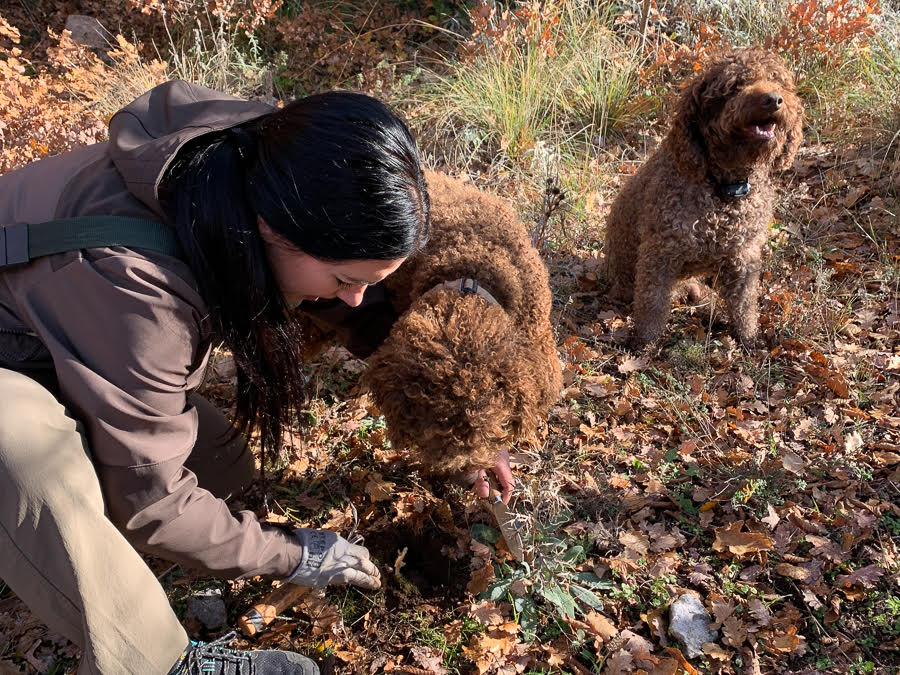
(People often ask if the dogs work just to get a reward. Ivana says Indi and Aldi are eager to please and to see their father (Tonci) happy.)
Black and white
Two main truffle species are among the most esteemed food products in the Mediterranean: Piedmont/Italian white truffles (tuber magnatum pico) and Périgord/French black truffles (tuber melanosporum). They are the first and second most expensive truffles in the world, respectively.
They grow wild in the forests of southern Europe and they’re native to France, Spain, Italy, Slovenia, and Croatia. Limited availability contributes to their value, as the majority of truffles on the market are cultivated.
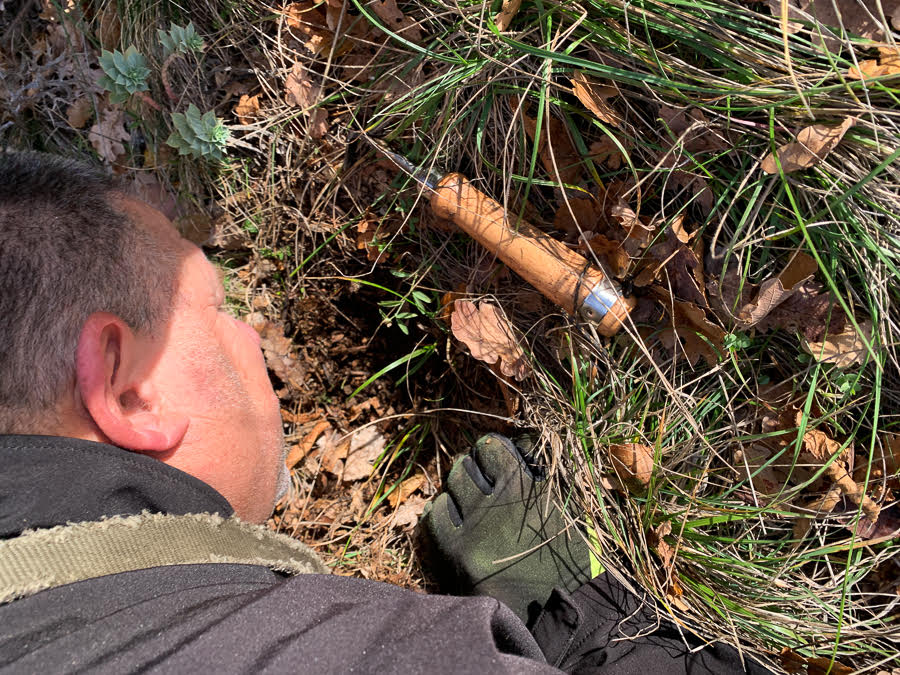
(What do Aldi and Indi eat? Regular dog food.)
Exclusive and expensive
Given the secret growing locations, labor-intensive sourcing, specially trained animals, limited quantity, and a short lifespan, truffes are a delicacy in the same camp as other rare foods: saffron, caviar, kobe beef, Densuke watermelon, and fugu.
In 2020, white winter truffles (magnatum) sold in the range of $3,000-$4,000 USD per lb. (retail) and black winter truffles (melanosporum) sold for an average of $1,500 USD per lb. Prices constantly change and vary per the yields of the growing season, the class of truffles (including size and smell), and the rarity of the type. I found reports on European wild truffles selling at auction for hundreds of thousands of dollars. Damn. I’d love to know the life story of one of those mushrooms.
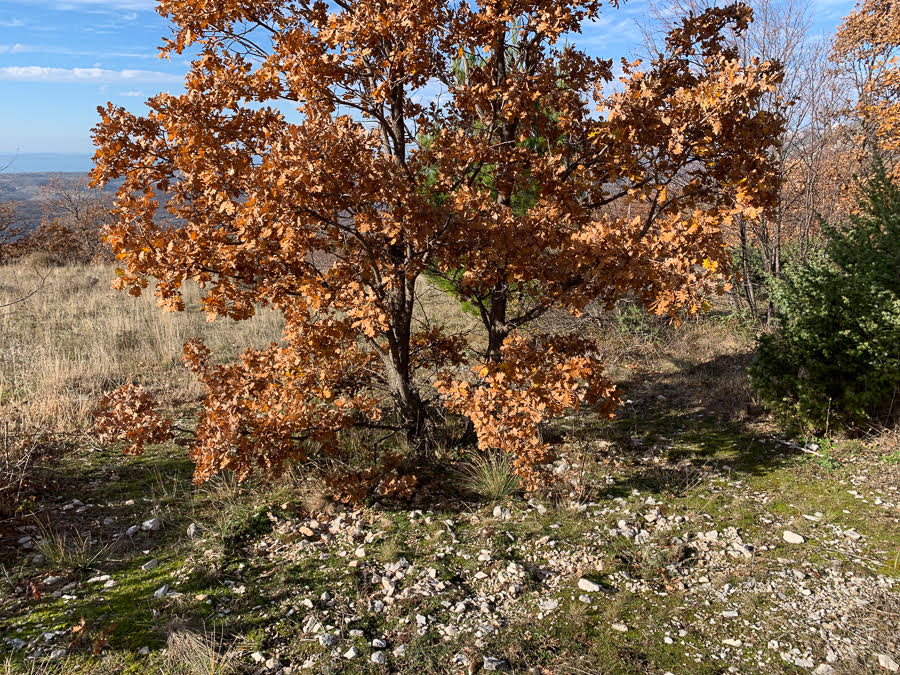
(Dalmatia’s oak trees and karst landscape make a special environment that’s ideal for wild truffles to grow.)
Dalmatian truffles
On Mosor, we found two types of black winter truffles: tuber melanosporum and tuber brumale. Yesss! We got the good ones! I was impressed that we found anything at all, the ground seems to favor rocks. It’s described as a karst landscape, one that’s made up of limestone and has some sort of a natural drainage system beneath. As it turns out, the terrain and Croatia’s climate make an ideal habitat for wild truffles.
One other thing is needed—the right tree. Truffles grow underground in symbiosis with certain trees; specifically, truffle spores and tree roots share nutrients. Dalmatia delivers on this too and some of the most common “truffle trees” grow here—Hrast (Oak), Grab (Hornbeam), Smrič (Spruce/shrub), Corylus Avellana (Hazel), and Populus Alba (Poplar).
Dobak Tek
After a successful morning hunting, it was time to eat. Our dining room was Mosor Mountain, under a large oak tree, appropriately. Once again, I enjoyed fresh truffle pasta—prepared right in front of me—while sipping local wine and gazing at Croatia’s beautiful scenery. A spread of cheese, meat, and soparnik was the second course, all of it topped with freshly shaved truffles. I was glad I had skipped breakfast.
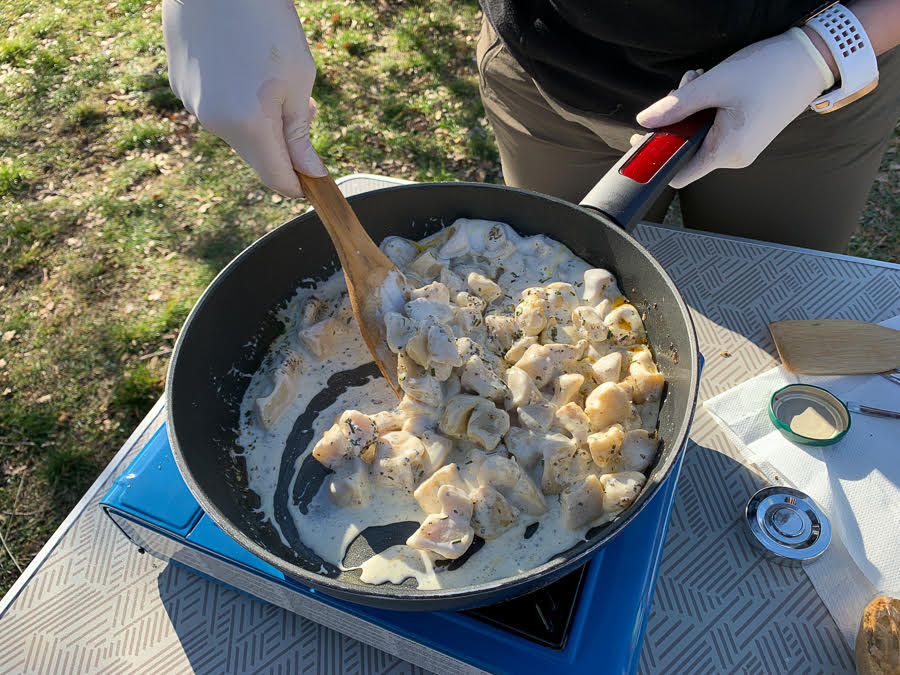
(The morning hunt culminates with a fresh meal of homemade truffle pasta. Once a truffle has been unearthed, its journey from ground to plate should be no longer than ten days.)
It’s funny, the pasta was delicious but I can’t describe the taste that truffles add. Ton
i said chocolate and strawberry but I’d go toward earthy and musky. My palate isn’t that refined but I know what I like and I craved more. I really think there’s something to that seductive, intoxicating aroma; it engulfs your senses and your brain like a potion. Maybe the mere anticipation of truffles is what drives behavior such as auction madness…
Winding down
After an upbeat morning I was pleasantly surprised that the tour kept going. On the drive back to our meeting location Ivana pointed out several places of cultural and historical importance—the remains of Skočiba, an old village in Gata that dates back to the Middle Ages; the church of Sveti Jure, on one of the highest mountain peaks in the country. It was a nice way to round things off and see more of Dalmatia’s heritage.
Leaving the seductive world of truffles, I thought about a modest comment Ivana made when we first discussed where to meet, “We do not have an office, nature is all we need.” I love that. I scored another great day outdoors, with good people and animals, in this country that I’m coming to appreciate more and more. By the way, there was no blindfold.
Learn more about tours with Truffle Hunting Dalmatia on the website.
Learn more at TCN’s Digital Nomads channel.
Story and photographs ©2020, Cyndie Burkhardt. https://photo-diaries.com
For more of Cyndie's experiences, check out her Croatia Through the Eyes of a Digital Nomad column.
Move Over Istria: Truffle Hunting Now Available in Dalmatia
December 12, 2020 - Once the sole preserve of Istria, Croatia's truffle hunting options are expanding - first Zagreb and now Dalmatia.
I love the randomness of life in Croatia.
A wonderful country there the unexpected is always around the corner.
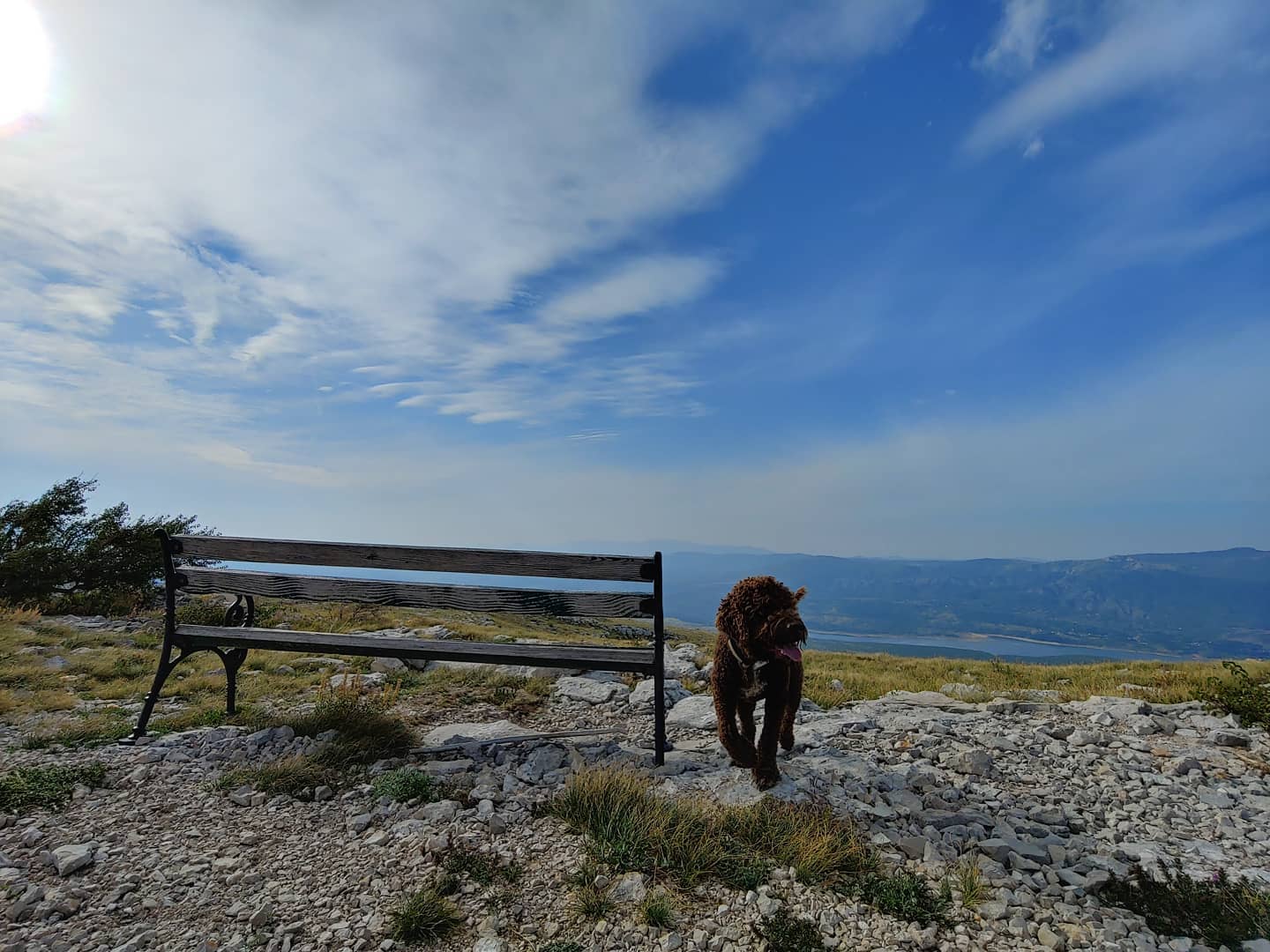
An invitation to go truffle hunting in the forests outside Zagreb a few weeks ago piqued my curiosity. Truffles and Zagreb? Really?!?
Oh, yes, but not only that. It seems that Turopolje truffles (the region which includes Velika Gorica by the airport) have long been an established tradition for those in the know - for years, apparently, these Turopolje truffles have been sent to Istria and sold there. In some cases, they have even made their way back to the restaurants of Zagreb via an Istrian detour.
My day in the forests of Turopolje was indeed an eye-opener, and you can read about it in Move Over Istria: the Rise of Zagreb Truffle Hunt Tourism.
And the Zagreb truffle story went beyond hunting. The truffles are now being served in dishes in an increasing number of local restaurants and they are inspiring new culinary combinations, two of which TCN featured recently - strukli with truffles and truffle pralines. You can learn more about them and follow the Zagreb truffle story here.
And there the story might have ended had I not been made aware of something that had completely escaped me during my 14 years living in Dalmatia - truffle hunting on the edge of Split.
I am reliably informed that the best places for truffle hunting in Dalmatia are Dugopolje and parts of Zagora, but there is zero chance of finding them without those specially trained hunting dogs.
One small local business offers just that - the complete truffle hunting experience, complete with 4x4 transfers to their secret hunting locations. The Najev family are local Dalmatians in love with their heritage, offering a range of tours in inland Dalmatia, which is one of the most beautiful and undiscovered parts of Croatia in my opinion. Exploring the nature of the region is as exhilarating as the tour itself. Depending on the season, the truffle types to be hunted are the black truffle (Tuber aestivum, Tuber brumale, Tuber melanosporum) and the white truffle (Tuber borchi-bianchetto). At the end of the hunt, there is a truffle-themed tasting of local products.
One more authentic experience in Croatia that is not so well-known. Croatia is full of such experiences, and the development of an eco-system supporting and promoting such specialist local tourism will help develop a more diverse and sustainable tourism offer.
You can learn more about Truffle Hunting in Dalmatia on the official Facebook page.
Move Over Istria: the Rise of Zagreb Truffle Hunt Tourism
October 25, 2020 - It has long been the exclusive preserve of Istria, but the Zagreb truffle hunting season is in full swing, with ambitious tourism plans for its development.
A couple of years ago, I was enjoying lunch on the Lesic Dimitri terrace on Korcula with a main dish which included truffles.
"Did you know that there are truffles to be found over there on Peljesac?" asked my luncheon companion, motioning across the Adriatic towards the Peljesac Peninsula, a view a young Marco Polo would have enjoyed as a child.
Truffles on Peljesac? Really? I had never heard of truffles in Croatia outside of Istria, a region whose outstanding gourmet offer is defined by the exclusive funghi which is highly sought after in the finest restaurants in the world. Apart from Italy and Istria, I was not aware that truffles could be found anywhere else, certainly not on Peljesac.
On the contrary, said my friend confidently. And not only that, but he had heard that they are shipped to Istria and sold there.
The luncheon conversation sat locked away in my head until very recently, when I was writing an article about the excellent new tourism promotion synergy between Zagreb City and Zagreb Country Tourist Boards with their new initiative to combine their offer in one fabulous - and extremely informative website called Around Zagreb. Among the many activities on offer in and around the Croatian capital was truffle hunting.
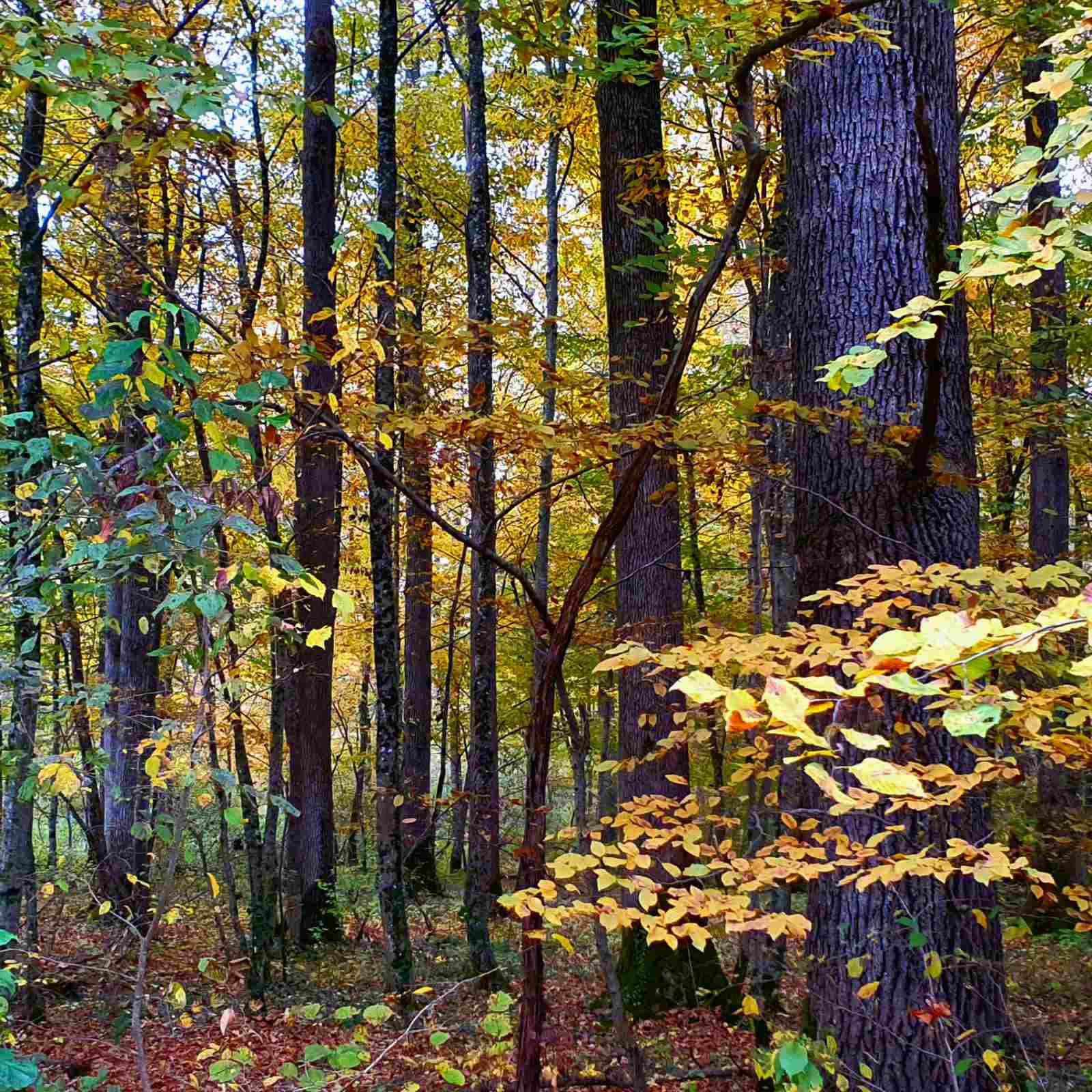
(Photo credit Taliah Bradbury)
Zagreb truffles? Really? This sounded even less likely than Peljesac. I decided to investigate, and I discovered that not only was Zagreb truffle hunting a 'thing', with its own organised tours, but that there were official efforts underway to develop the Zagreb truffle hunting experience into an attractive and more widely available activity just a short drive from the centre. And the more I began to look into the Zagreb truffle scene, the more interested I became, culminating in a family day out in and around Velika Gorica, close to Zagreb Airport, yesterday.
Zagreb County Tourist Board director Ivana Alilovic took over the position recently and has been energetically looking at ways to add value and promotion to the considerable content in the region around the city. The Around Zagreb website is one concrete early result, but she was reportedly also very passionate about promoting the Zagreb truffle story, and she invited us along to take part in a hunt that was already organised.
It was quite a day.
A little online research and some conversations on the day filled me in with some useful information. Truffle hunting does indeed exist, and in various locations in oak forests around the capital - near Samobor, on Medvednica, and in Turopolje, near Velika Gorica, from where our day would begin and end. Some organised local truffle hunts have recently started, but the most results Google was showing for 'Zagreb truffle hunt' were tours to Istria starting from Zagreb.
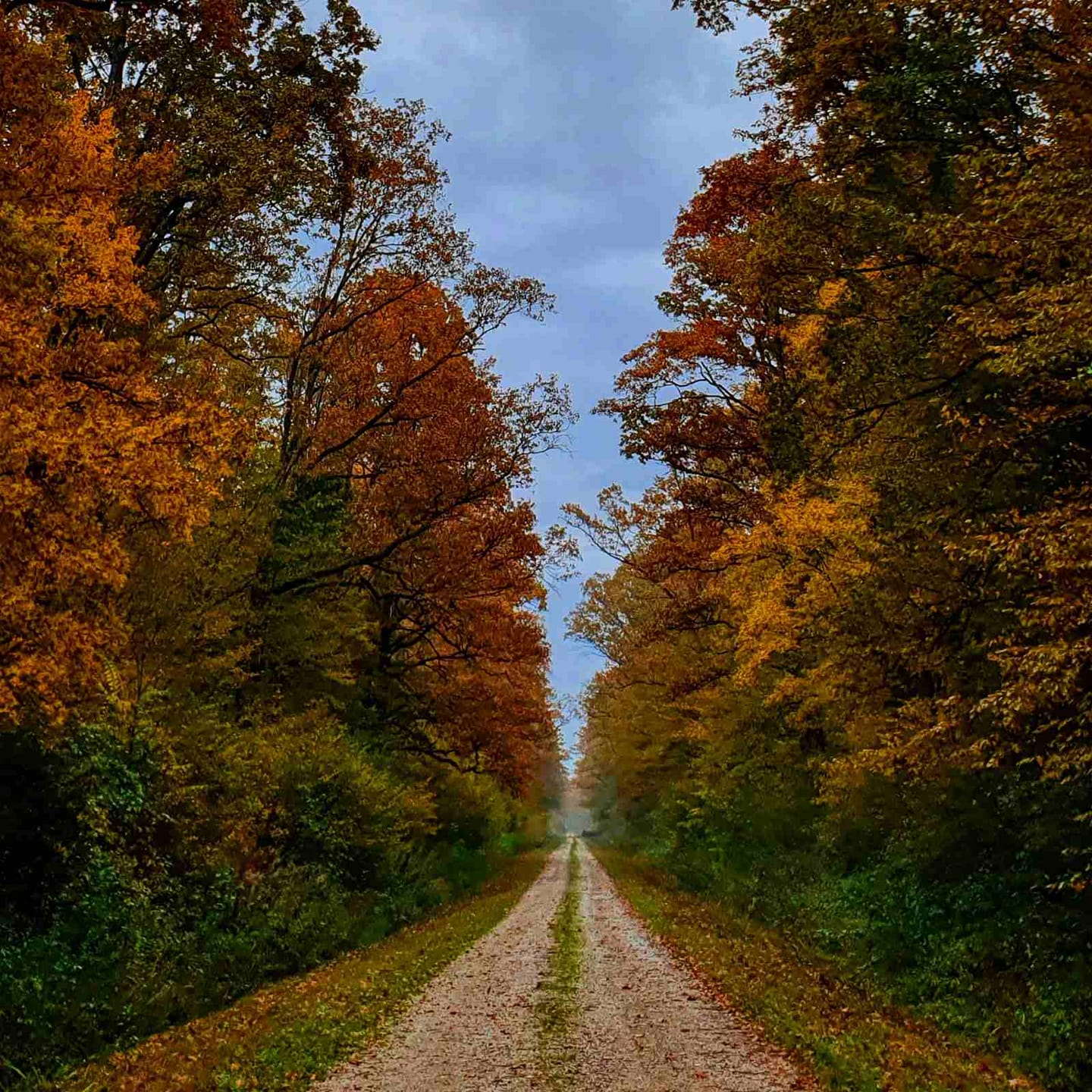
(Photo credit Taliah Bradbury)
Alilovic wants to change that by building up an eco-system of truffle tourism, which goes beyond the hunting experience itself. And while she has some way to go before achieving her goal, the building blocks are firmly in place, as we experienced on our refreshing visit to the forest, looking spectacular in its autumnal colours.
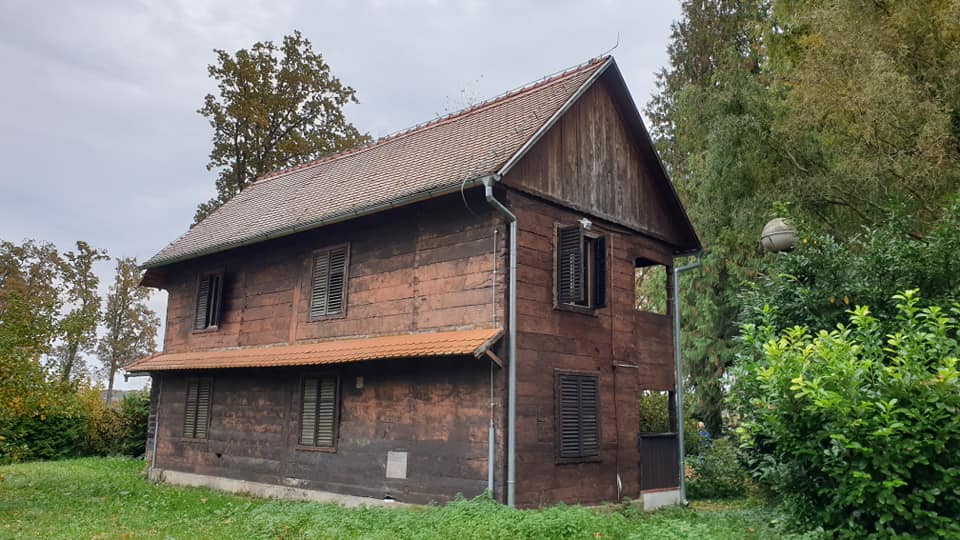
After meeting at an arranged spot in Velika Gorica, we followed Ivana into the forest to a delightful wooden house managed by Croatian Forests from where the event would begin.
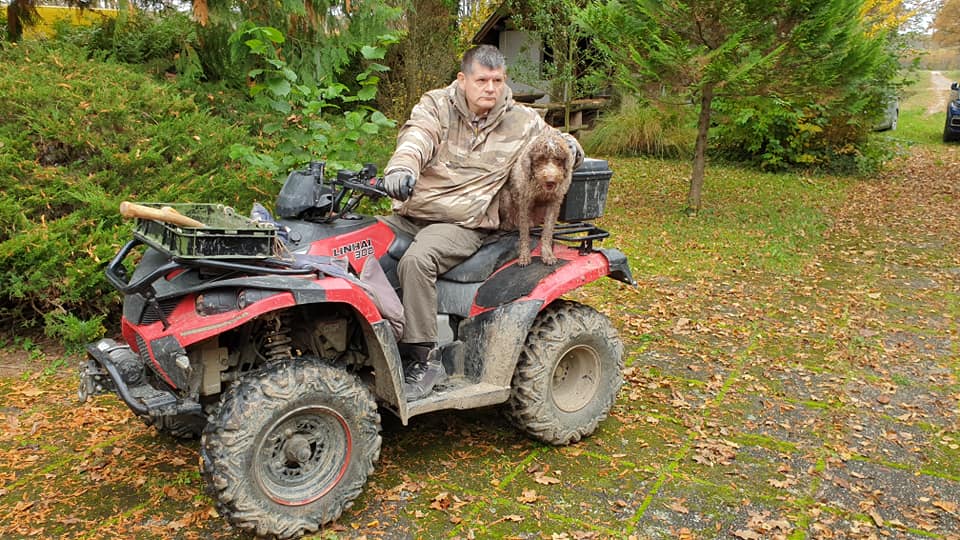
In addition to the others taking part on their first hunt, we were also introduced to the dynamic duo, who ensured that our truffle-hunting day would be a success - Stjepan and Zagi, a truly fabulous team for five years now, of which much more below.
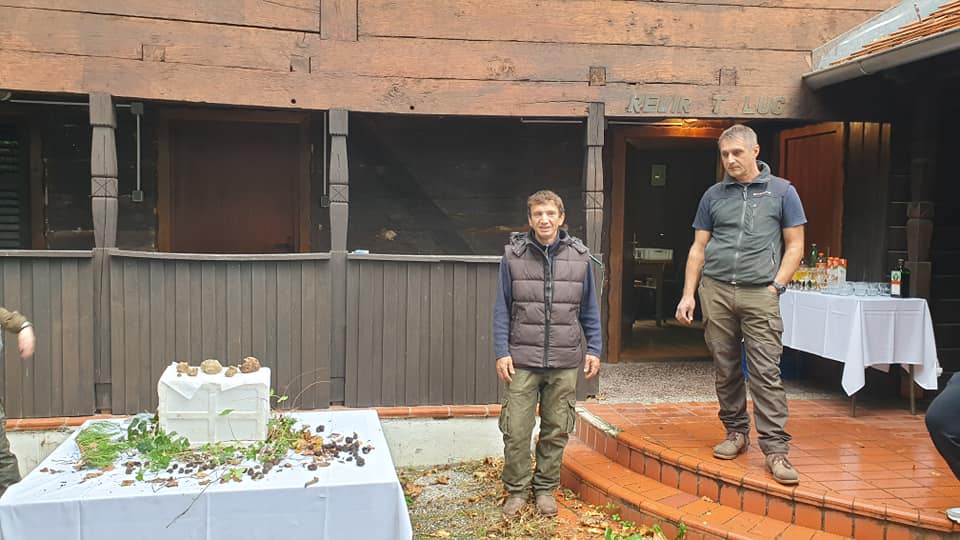
There followed an excellent presentation on truffles in the region and beyond, with the many questions from the audience being answered. Far from being a closely guarded secret, Zagreb truffles have been for sale on Dolac market for more than a decade now, and the 4 truffle hunters before us had many years experience trawling through the forests of the region in search of this black and white gold. It was interesting to note that just like Peljesac, they too supply the Istrian market, and it is only a relatively recent development that Zagreb restaurants have started to seriously order local truffles locally.
After all, a Zagreb truffle does not have the same aura of an Istrian truffle. A food blogger who was also on the hunt told us the amusing story of a famous player from the Croatian national team having dinner at a well-known Zagreb restaurant. Asking if the waiter could bring him a truffle to show his friends, the waiter returned with a Zagreb truffle, explaining that it had been locally procured. Smelling the truffle, the famous footballer expressed his dissatisfaction and requested a truffle that had come from Istria instead.
The waiter disappeared and returned with the truffle which had come from Istria. What a difference, the player exclaimed!
It was actually the same truffle. Sourced in Zagreb, sold to Istria, then sold to the Zagreb restaurant. Perception is everything...
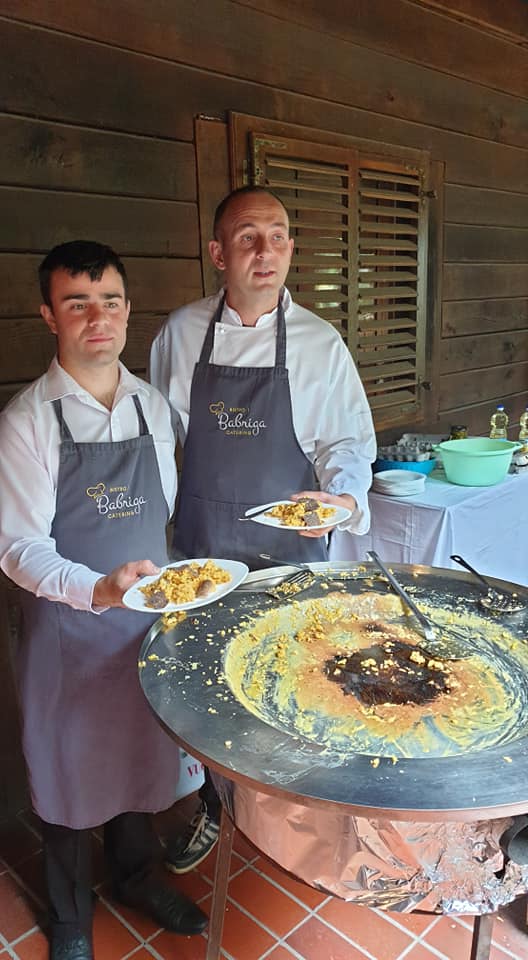
Part of the plan to develop Zagreb's truffle tourism opportunity is to build a network of supporting partners, all of whom have a role to play in providing richer content for the tourism experience.
Two local Turopolje restaurants, whose menus offer local truffle delicacies, were on hand to feed the hunting team with a selection of truffle dishes, starting with Babriga from Velika Gorica, whose team was on hand to serve breakfast after our welcoming presentation, the highlight of which was scrambled eggs with black truffles.
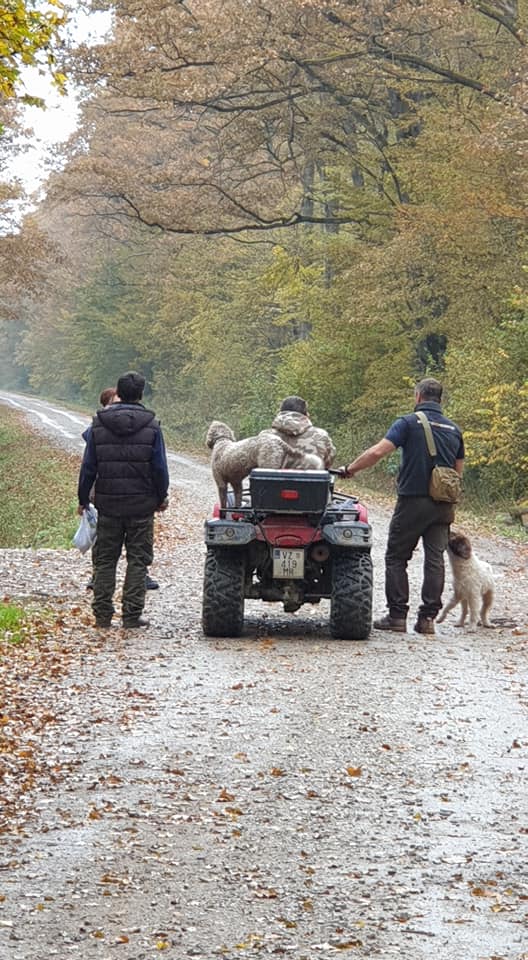
It was time to hunt! Off we headed into the forest, before splitting up into four teams. I had already chatted to Stjepan a little and decided to stick with him. I was surprised to see him on his quad bike, as I had not expected truffle hunting to be quite like that. He explained that he was an invalid and confined to a wheelchair, and that truffle hunting was an escape from that reality. With his relationship with Zagi, it was clear that I had found a professional team who adored each other.
There are many more technical descriptions of truffle hunting online, and I don't pretend to be an expert at all. I got the most joy watching the successful partnership of Stjepan and Zagi. Truffle hunting is quite literally like looking for a needle in a haystack. Unless you have a properly trained dog (Zagi started getting truffles in his food at a very early age five years ago), there is no chance you will ever find a truffle. With a well-trained dog, however...
Was it beginner's luck? Literally within 20 seconds of entering the search area, Stjepan released Zagi, who ran about 20 metres and started digging. At this point, he was called off so that he did not destroy the truffle. Zagi was more than happy to be called off, as he headed to his master to be rewarded with a treat for his work.
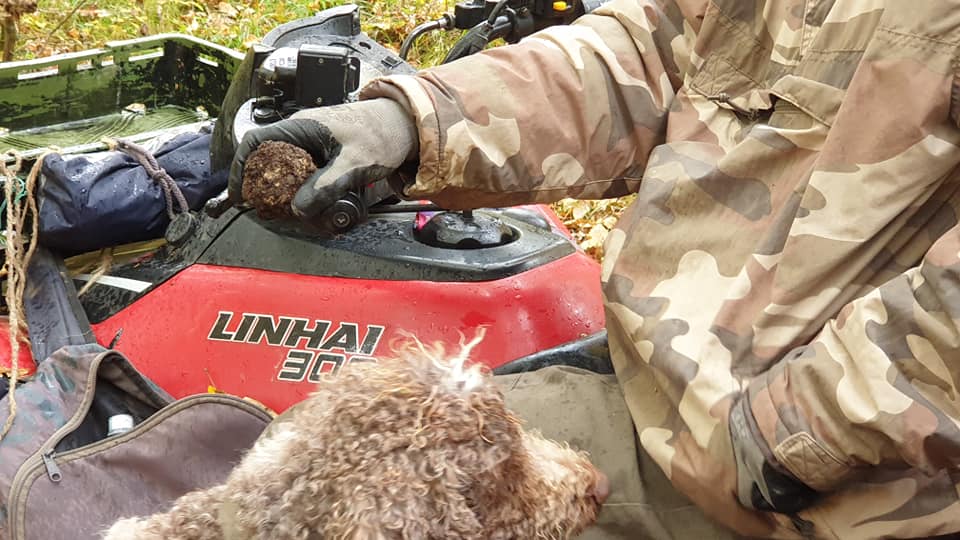
It was a great start, with an impressively-sized black truffle to give us encouragement.
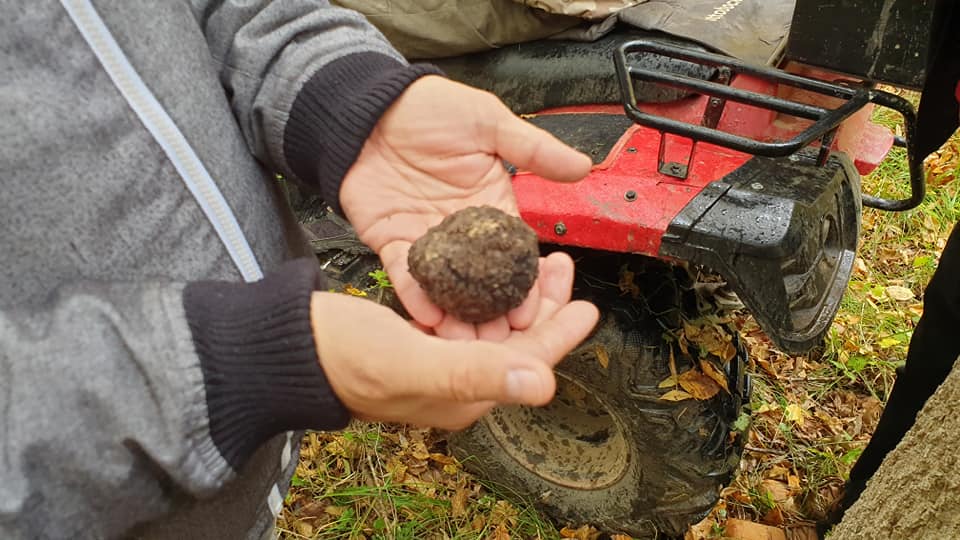
What a great partnership! The search for a needle in a haystack, with Zagi's trained nose the only hope. His effortless efforts reveal the hidden locations to bring joy to his owner, who rewards his efforts with treats which bring canine joy. Perfect!
There were several kids on the hunt who were enjoying themselves immensely, but nobody could keep up with Zagi, who went off in all directions in search of treasures to please his master. It would have taken a videographer more skilled than me to capture the highlights, but here he is from distance, having found truffle number four.
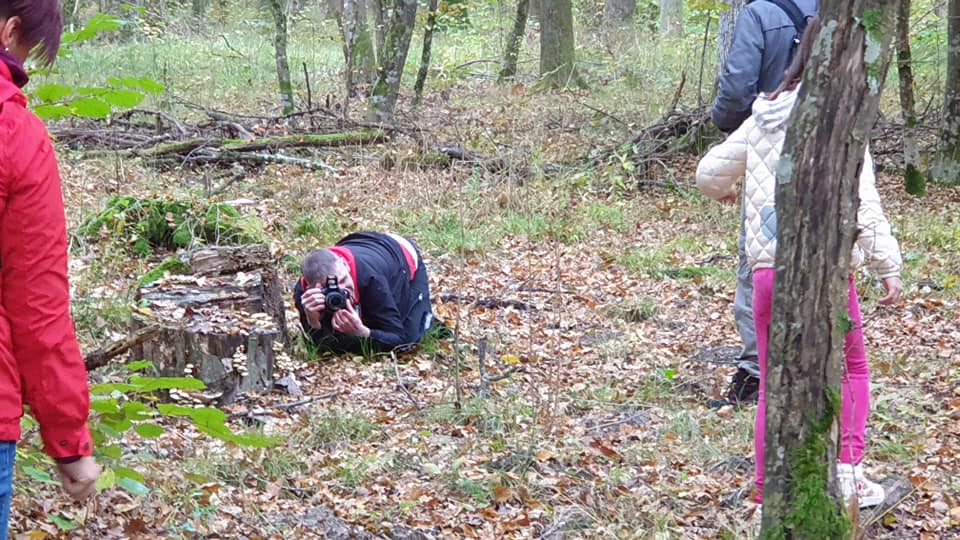
Some TCN photographers at the scene were taking things a little more seriously than I normally do...
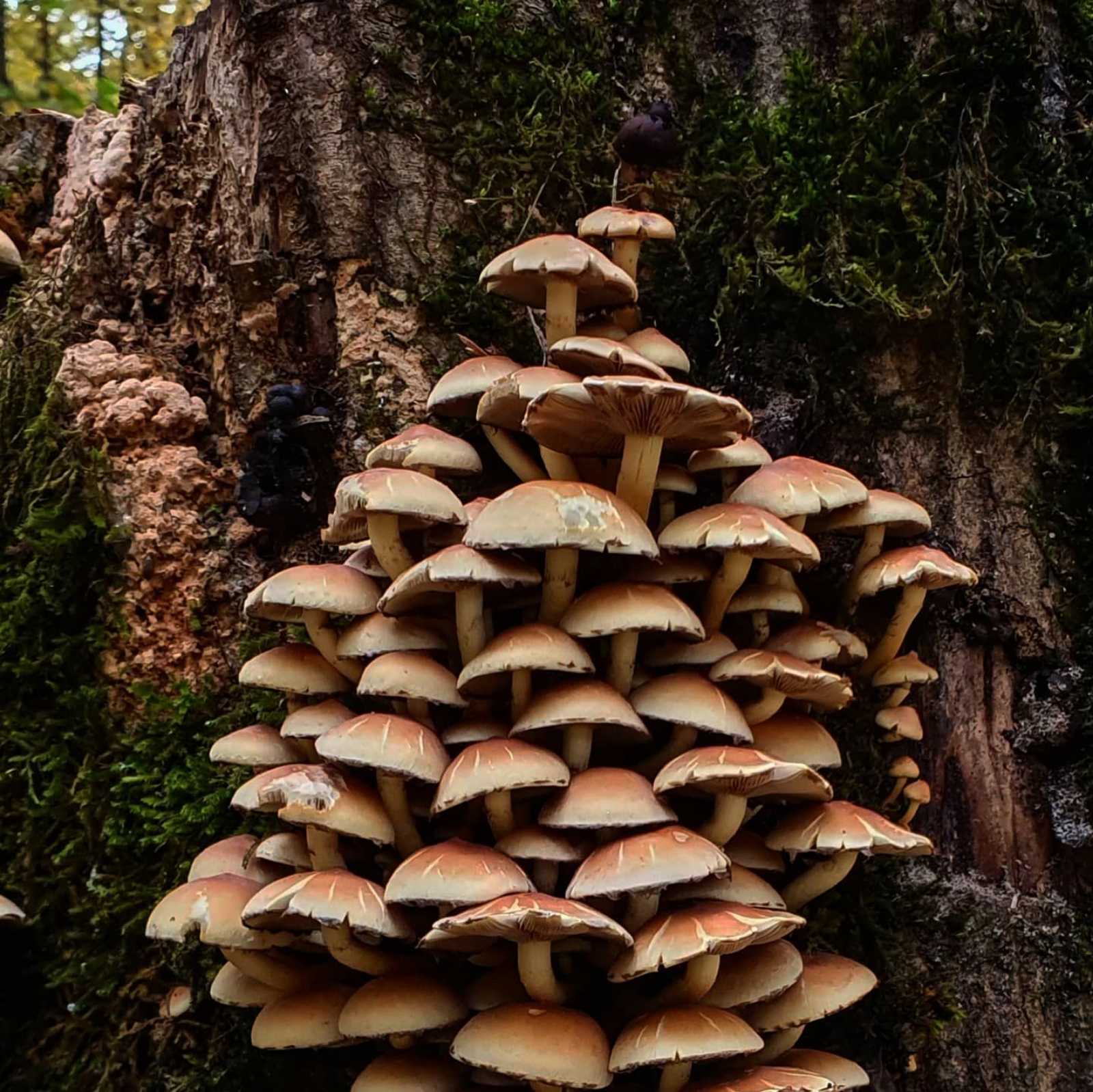
(Photo credit Taliah Bradbury)
In addition to the truffles, the wealth of mushrooms on show was striking. Perhaps something to think about combining into the tourism offer? A mushroom and truffle hunt, with the best of the edible mushrooms and truffles finding their way to your dinner plate after the hunt.
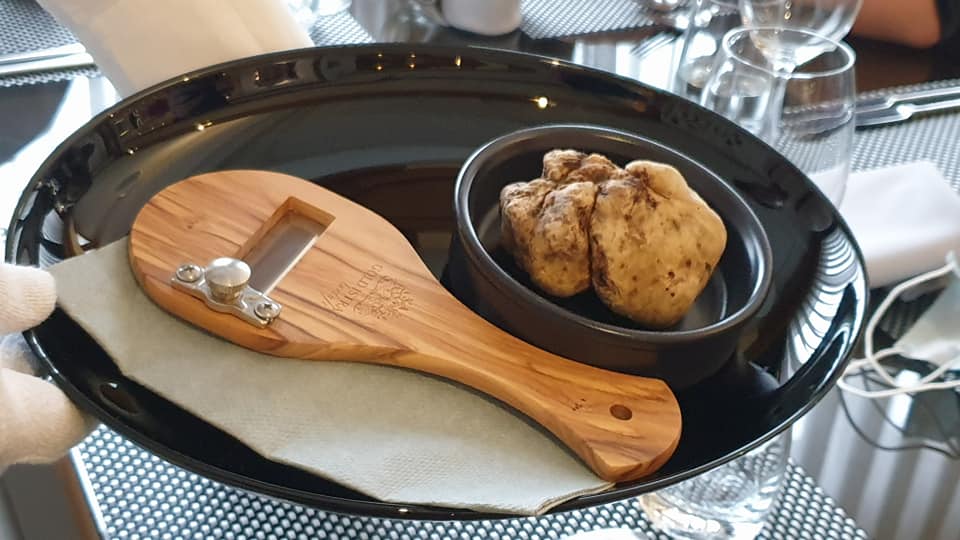
To my shame, I had never been to Velika Gorica before (unless you count Zagreb Airport), and I certainly was not expecting to find what awaited us at lunch. A Michelin-recommended restaurant which specialises in seafood due to the Sibenik County origins of the family which owns it. Opened in 1994, Mon Ami has been on the Michelin list for the last three years, and Bruno Ceronja is continuing what his father started to produce a memorable gourmet experience.
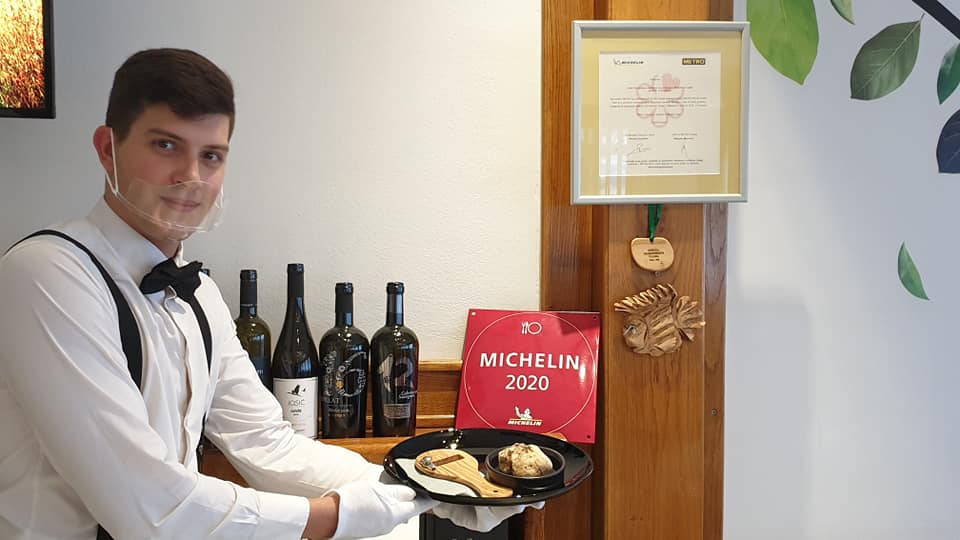
One of the luncheon ingredients was presented to us before we ordered - a 135-gramme Turopolje white truffle.
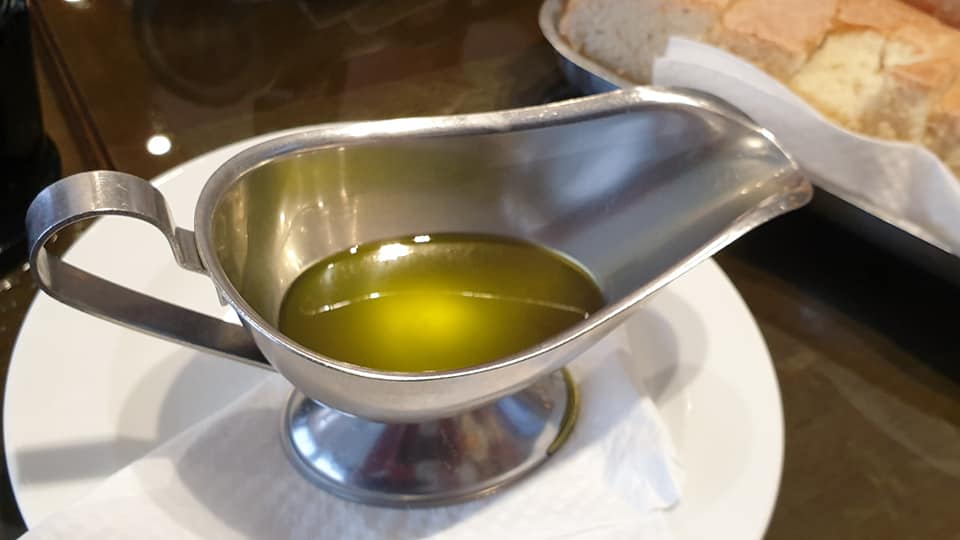
In my opinion, Croatia should be marketing itself on the basis of safety, authentic experiences, and lifestyle. And for an authentic gourmet experience, combining local flavours with his Sibenik roots, Bruno pulled out all the stops.
Home-made bread with his domestic olive oil - we could try both the 2020 harvest, above (5 days old) or the 2019 harvest. There was a spiciness to both which I have not come across too often in Dalmatian olive oils - delicious.
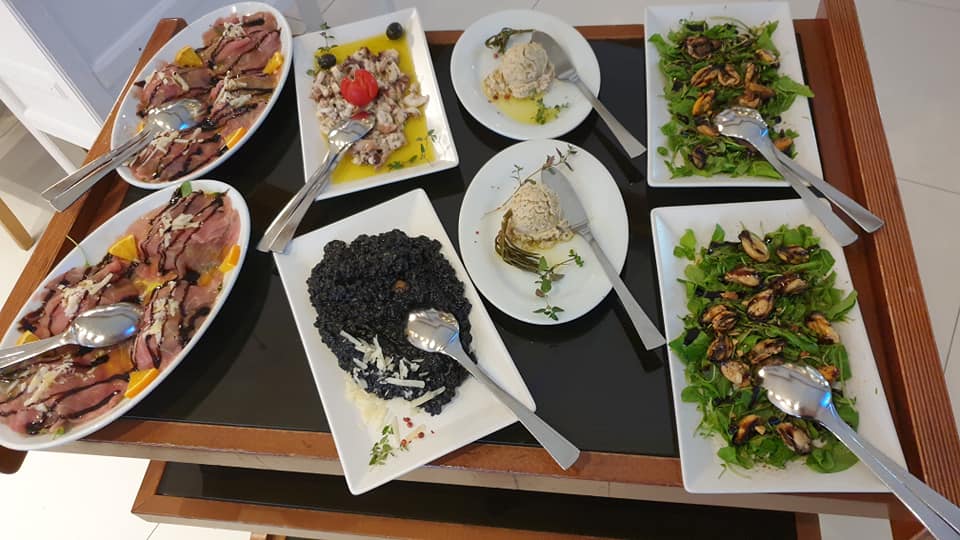
Rather than choose from the menu, we followed the excellent waiter's suggestion to try his recommendations, which resulted in an exquisite selection of starters of Dalmatian seafood classics. Black risotto, fish pate, smoked mussels, and the clear winner...
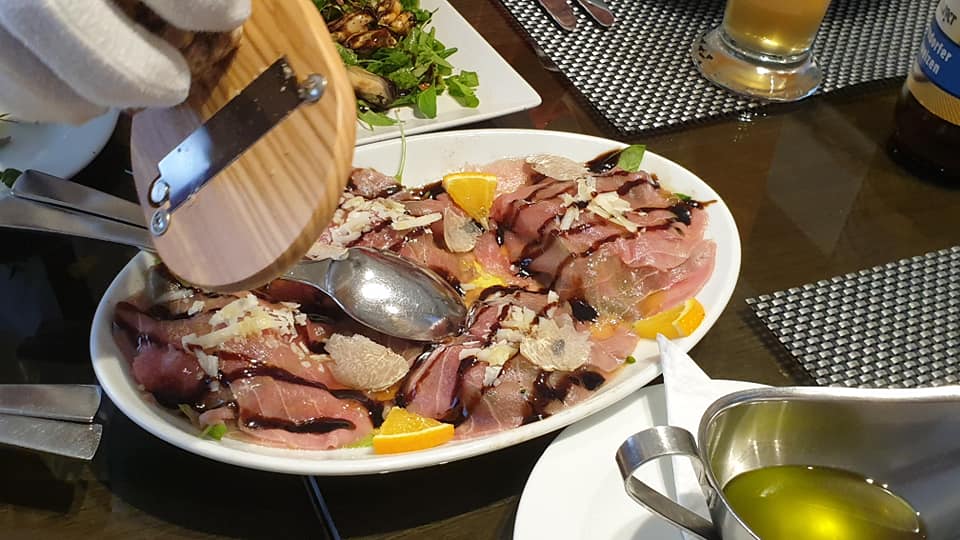
... tuna carpaccio with white truffle shavings on top.
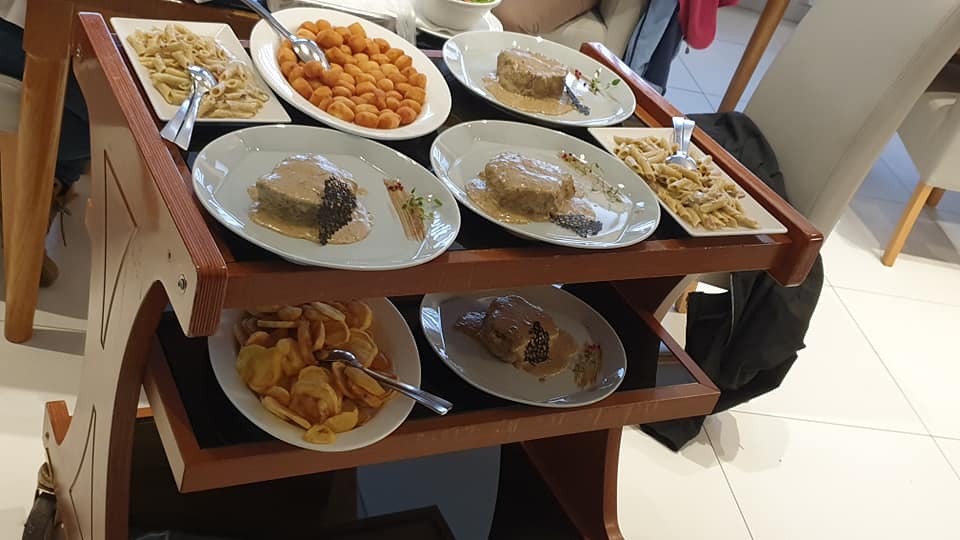
From seafood to fuzi pasta with truffles, and beefsteak for the main course, medium rare in a Turopolje truffle sauce...
... with a little white truffle magic on top.
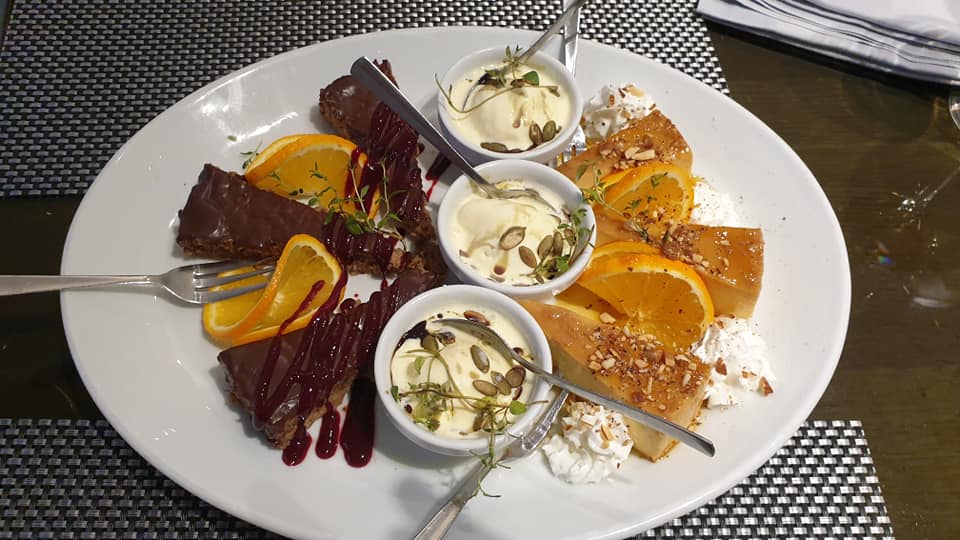
There was no room for dessert, but room would have to be found, with a mix of Dalmatian and continental treats to round off what had been a truly excellent day. Traditional Skradin cake from Bruno's Sibenik roots, a supremely light rozada, and vanilla ice cream with pumpkin oil. The latter might sound an unlikely combination, but I have become mildly addicted since discovering it once I moved from Hvar to Varazdin.
We were not quite finished with the food yet. One of the challenges (and opportunities) that Tourist Board director Ivana Allilovic has to build on this excellent start is to get enough related products and content to add to the main experience. But things are moving already in that direction, as we were introduced to a lovely lady over lunch who runs the Cipov bakery in Buševec village near Velika Gorica, and who gave us one of her truffle-inspired delicacies to warm up and try when we got home - strukli with truffles. It was outstanding.
A highly educational day, and one with much food... and much food for thought. A simple concept, using the natural treasures of the local region to build up a tourism story based on a fantastic authentic experience in spectacular nature. I wish Ivana luck with her plans, and this is a story we will be following closely.
And for those of you dining in Istria, I would be interested to know if the restaurants up there have heard of Turopolje Zagreb truffles.
For the latest travel info, bookmark our main travel info article, which is updated daily.
Read the Croatian Travel Update in your language - now available in 24 languages.
Join the Total Croatia Travel INFO Viber community.
This article was sponsored by the Zagreb County Tourist Board.
Truffle Hunting: Unique Gastro Experience in the Heart of Istria
July 24, 2020 - The Karlić family was the first in Croatia to offer visitors the experience of truffle hunting. We headed out on this unique and above all demanding activity with a truffle hunter and a dog Lila that has been specially trained to search for truffles. In addition to the experience of hunting on the property of the Karlić family, the tour also included tasting specialties with truffles, and owner Ivana prepared them in front of us.
A small number of people in Croatia are engaged in the production of truffle products. The Karlić family is one of the few families in Istria that is more seriously engaged in their production and distribution, but also in hunting. Interestingly, because of local peoples’ tradition, it is said truffle “hunting”, not harvesting.
More dogs than humans
Truffles in Croatia grow mainly in central Istria, and in the rest of the world, they can be found in Italy and small quantities in France, Germany, Austria, and some other countries. They are mostly used by people in Italy and Croatia.
The Karlić family started their story about truffles when their grandfather started researching them 40 years ago. He quickly passed this love on to his wife and daughter, Ivana's mother. It was strange because, at that time, she was supposed to have a "female“ job, not be in the woods with other guys, but she didn't care. Later, she started a family business. Her children Ivan and Ivana also literally grew up in the woods truffle hunting.
At the entrance to a beautifully landscaped yard in the small central Istrian village of Paladini, I and a few other visitors were greeted by Ivana Karlić together with their seven truffle hunting dogs. She explained that there are more dogs than people living in Paladini, located a 40-minute drive from Poreč. There are only about 40 inhabitants, and about 100 dogs because all the people there are engaged in truffle hunting.
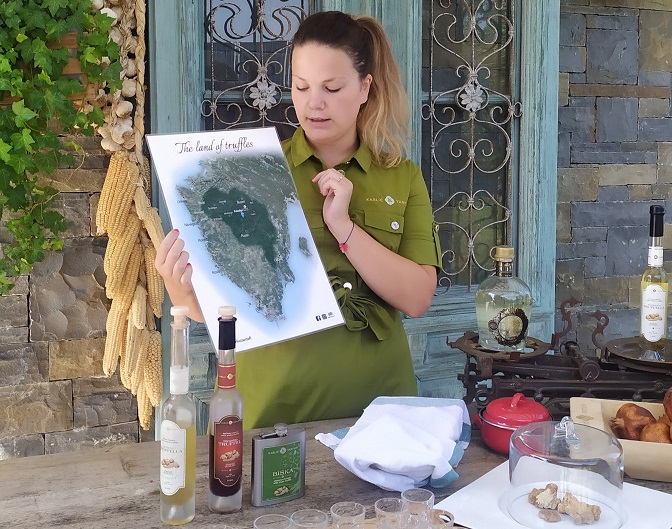
Ivana Karić introduced us to the Istrian tradition of truffle hunting
I was enchanted by the large tasting room for sampling truffles, which perfectly fits in with the nature of central Istria. The panoramic view of the surroundings of Motovun leaves you breathless, as well as the truffle specialties prepared in front of you by Ivana.
Demand for truffles
At the beginning of the truffle hunting tour, Ivana introduced us to the family tradition and we "warmed up“ by tasting homemade truffle rakia – Biska, Teranino, and Medenica.
You can't go truffle hunting in the woods on an empty stomach, so three sequences of dishes followed – slices of sausage and cheese, scrambled eggs, and candied fritters. All the specialties were extremely delicious and filling. That's why it is advised to come hungry. Ivana prepared all the specialties for us in the open kitchen in the tasting room. We could see the whole process of preparing and cooking dishes with truffles. While she was cooking and serving us, Ivana was casually telling the story about truffles and her family.
Truffles and truffle products such as oil, cheese, sausages, rakia, and even chocolate spread can be bought at the shop on the property. Recently they even opened a store in Poreč.
The idea of opening a store came up during self-isolation when they finally had time to think about it, plan it, and realize it. Until now, their products could have only been bought on their property, and their truffles were found in the dishes of many Istrian restaurants, most of which are in Poreč.
"We opted for Poreč because we cooperate with a large number of restaurants here. A lot of people who eat in these restaurants want to buy truffles, but they don't want to come to Paladini only to buy them, so we thought it was a perfect opportunity for guests to buy truffles and take them home,“ says Ivana.
Also, during the lockdown, when they were forced to stay home, and also when the amount of work in tourism was much smaller, they opened an online store to sell their products.
Truffle shop in the Istrian city of Poreč
Training dogs (and people) to truffle hunt
After Ivana fed us well, we went hunting in the woods. Fifteen years ago, the Karlić family launched guided tours with truffle hunting dogs to give tourists a direct insight into how difficult it is to find truffles in the woods. The truffle is, in fact, an underground fungus that grows in symbiosis with trees, at their roots, most commonly oak and hazelnut trees. This makes them extremely difficult to find, so specially trained dogs are needed to search for them.
"Any dog breed can truffle hunt, but the best breed is the Italian Lagotto Romagnolo. They are very obedient and have a good sense of smell. It is easy to train them. Females are much better at truffle hunting because they are focused on truffle hunting all year round, while males are in one part of the year focused on looking for females and are therefore 'distracted',“ explains Ivana.
The Karlić family trains dogs too, as well as organizing courses and exams for future truffle hunters, as people who go truffle hunting are called.
"The training itself lasts one year. We are training them since they are 3 to 4 months old, through the game. We give them truffle treats, we bury truffles, we show them how to dig truffles... The last and most important learning process is the departure of a small puppy with an adult truffle hunting dog to hunt. An adult dog starts digging, gets a reward, a small dog is always jealous of it and then because of his jealousy he will start looking for truffles and get a reward for finding it,“ says Ivana and adds that they only train their dogs.
Karlić family has seven dogs and all of them must be trained every day
Truffle hunters must also pass an exam to know how to behave with dogs in the forest. The license is paid and every year the entrance to the Croatian forests for hunting white truffles must be paid separately.
"We organize exams for truffle hunters in our property. We have about 300 people looking for truffles for us and from whom we buy them,“ explains Ivana.
Kings of gastronomy
A smiling truffle hunter Sanjin, dressed like a real hunter with a small shovel on his shoulder, along with the dog Lila, took us to the woods. The real adventure began. It was great to feel the uncertainty in the search for truffles because every time you go to the forest you never know if you will find truffles.
One tourist took her dog on the tour, which is also allowed, so the hunting experience itself was even more fun as both dogs ran around us in search of truffles.
There are two main types of truffles, black and white. Black truffles grow throughout the year in Istria and are divided into two types – summer and winter. The summer truffle is most often used by restaurants and costs around 200 euros per kilo, but the price always varies, depending on supply and demand.
White truffles grow only from September to January. The peak of the white truffle season is in November and its price is much higher, ranging from 400 euros per kilo to 2,000 – 3,000 euros per kilo, depending on the size and details. With white truffles, every detail counts.
As Ivana says, the white truffle is the king of gastronomy. It is one of the top 10 foods in the world in terms of quality, price, and demand. It is expensive because it grows only in Italy in the area of the town Alba and the province of Umbria. In Istria, it grows in the Motovun forest near the largest Istrian lake Butoniga. That's exactly where we were truffle hunting too.
Commitment to work
The Karlić family was the first in Croatia who tried to cultivate black truffles – and they succeeded. Our truffle hunting tour started right from their black truffle plantation towards the forest. However, it took a lot of time for the first black truffle to grow there.
"It was a big experiment. We waited 8 years to find the first truffle. After 8 years, our hopes that black truffles can be cultivated have been confirmed. A lot of people after us also planted plantations. One would think we might be jealous because it was our idea, but we’re very proud. It favors afforestation and the environment gets cleaner,“ says Ivana, who believes that the cultivation of black truffles was helped by the fact that the plantation was planted quietly next to the forest where they grow naturally.
During the tour, our truffle hunter and guide Sanjin was tirelessly showing us how to truffle hunt. When a dog starts digging, it means he has scented something. When Lila started digging, Sanjin ran up to her to stop her from eating the truffle she found. By the end of the tour, Lila found three truffles, with a little help of one visitor's dog.
As the truffle maker explains, dogs must be in constant contact with truffles, eat them and go hunting for at least an hour every day, so during our tour he allowed him to eat one small truffle he dug up.
A small, well-coordinated team
Sometimes truffle hunting fails. Sometimes no truffles could be found, given that they are very rare and difficult to find, but this does not discourage truffle hunters at all. Sanjin says he goes truffle hunting as early in the morning as 4 am and it never gets boring.
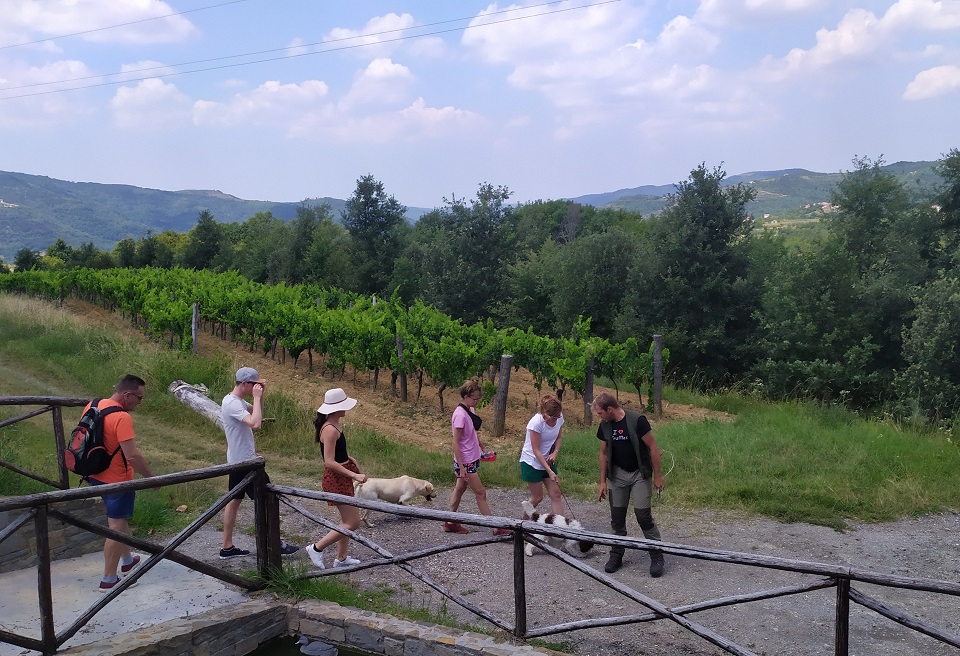
Guided truffle hunting tour in the central Istria
Judging by what I experienced at their property and in the forest, the Karlić family, together with a few more employees, have dedicated their lives to truffles. Ivana is the third generation in the family of truffle hunters. As Ivana points out, the truffle business, from cultivating, hunting, cooking, production, distribution to selling products, is not considered a job at all but a way of life.
"Our team is not big, but it is well-coordinated. We are all like one big family and everyone knows how to do everything. Everyone loves dogs and truffles and it can be seen,“ says Ivana.
Most of the guests are foreign tourists
After spending a day on their property, I realized that the Karlić family members love what they do. Guests, mostly foreign tourists, also recognize it.
"Foreign tourists make up 90 percent of our tourists. For them, our products are affordable, some even say cheap, while for the average Croat our products are expensive, which is clear to me. Truffle hunting justifies our offer in terms of price,“ says Ivana.
An hour at the tasting hall and two more hours truffle hunting were enough to delight me.
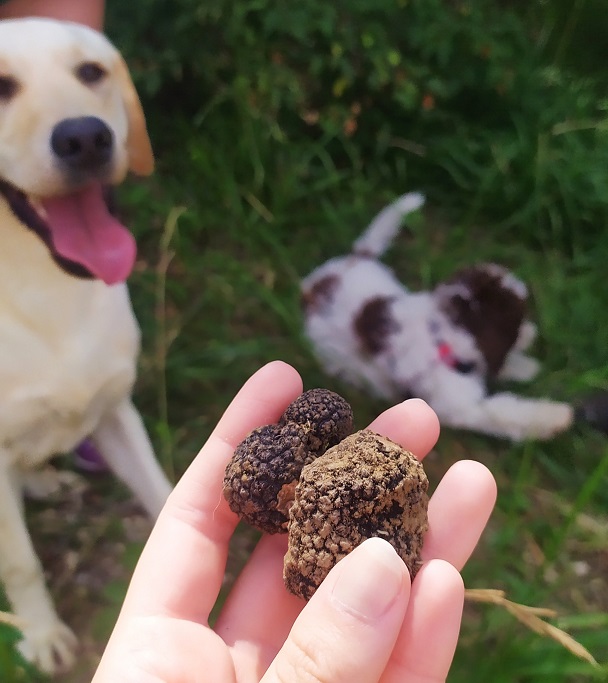
Black truffles, straight out from the ground
"People have great food truffle hunting experience. Some people come back to us every time they come to Croatia. They go on the same tour, eat the same menu, only because they enjoy our hospitality,“ says Ivana.
If someone had told me that my most beautiful experience during the summer would be going to the forest to truffle hunting, I would not have believed him. But Ivana and her team managed to convey their love for truffles to all of us visitors.
What makes Karlić family so unique is their passion and unsurpassed knowledge about truffles.
Truffle products
Last year, the Karlić family, in cooperation with the Aura Distillery, launched the first truffle-flavored gin. It's limited edition and a one-liter bottle costs 100 euros. This gin sold out quickly, and as Ivana Karlić says, the price is so high because of the extreme complexity of its production, as well as the taste. Even critics say their gin is top-notch and deserves that price.
Also, the Karlić family was the first in the world to make a combination of chocolate spread and truffles. It resulted in Trufella, a version of Nutella with truffles, made of white and dark chocolate. It is also possible to taste and buy Truffela while on the truffle hunting tour.
“We also have cheese and sausages. We make such products in cooperation with other small manufacturers. We give them our truffles, they already have their well-known product and then we combine it,“ says Ivana, but adds that the best product is fresh truffles that can be added to any dish. She recommends it with traditional Istrian pasta called fuži.


